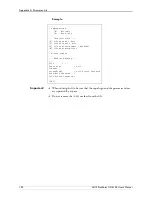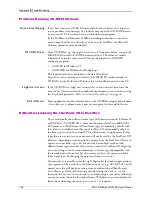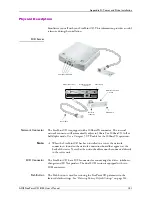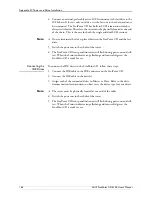
Appendix B: Troubleshooting
132
AXIS StorPoint CD E100 User’s Manual
Name Resolution Problems in Windows (SMB)
If you cannot find your StorPoint CD on your Windows (SMB) network, the
reason might be a name resolution problem.
Find Computer
When you have installed the StorPoint CD, it takes a while before it shows up in
the browser list in Network Neighborhood. You can either just wait for the
browser list to be updated, or you can accelerate the process using the
Find
Computer
function available in Windows 95/98 and NT. Alternatively, you can
perform a manual mapping, e.g. use the command
NET USE X:
\\AXISnnnnnn\Volumes
.
Flush Name Cache
Use the command
NBTSTAT -R
to flush your machine's name cache.
Workgroup
Note that the StorPoint CD cannot be a master browser server in a workgroup.
It is not possible to place the StorPoint CD or a group of StorPoint CD servers
in a single workgroup without Windows machines running file and/or print
sharing.
Use WINS or
LMHOST
If you are using NBT and try to access the StorPoint CD over a router, e.g. the
StorPoint CD is located on a segment remote from your computer, you must
use WINS or LMHOST. The recommended method is WINS. Provided that
you have set the WINS parameters correctly, you should be able to access the
StorPoint CD over routers. If this fails, check the following:
1. Make sure the StorPoint CD has been registered in your WINS database
located on the Windows NT server. If the StorPoint CD is registered and
you still cannot see or access it over the Network Neighborhood, you
probably have other name resolution problems on your network.
2. Ping the unit via its IP address to make sure that you have TCP/IP connectivity.
3. Ping the unit using the SMB server name (NetBIOS) to check that the name
resolution works.
4. If you are using WINS, try a “static mapping” where you connect the IP address
of the StorPoint CD to its NetBIOS name. Note that if you used DHCP, you
should add a reservation where you connect the MAC address of the StorPoint
CD to a reserved IP address. It is often recommended that you use these types
of settings for server equipment. Refer to your Windows NT server manuals
for more information on this.






























